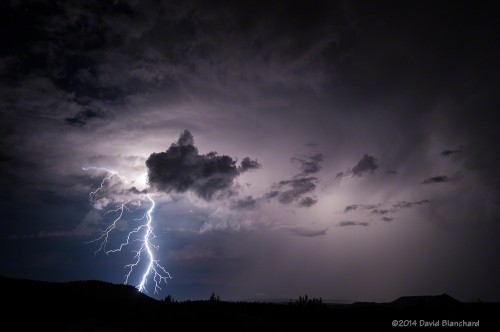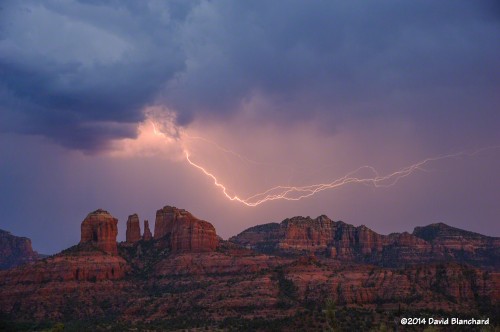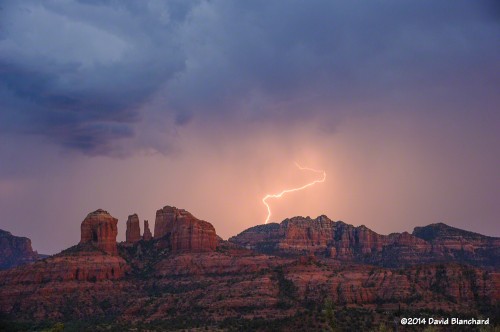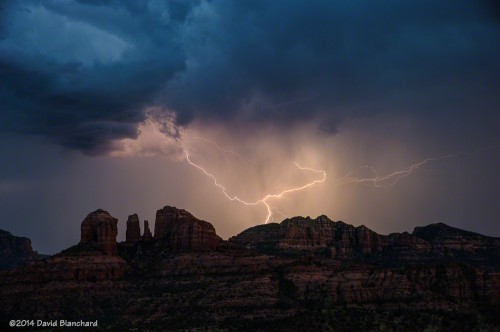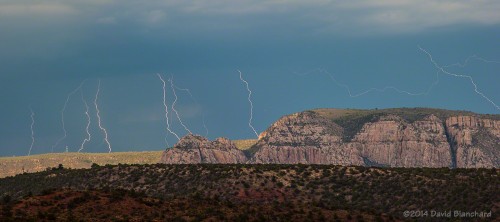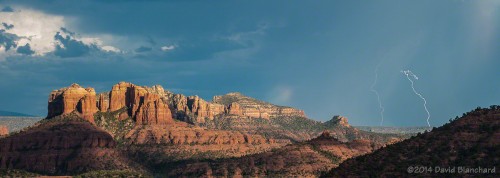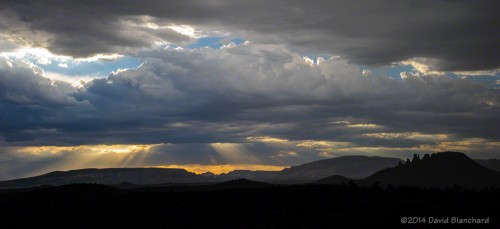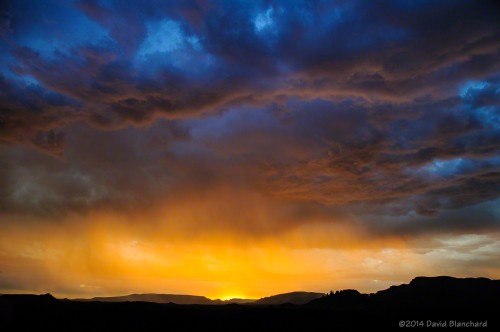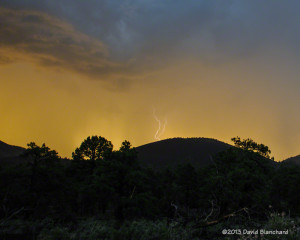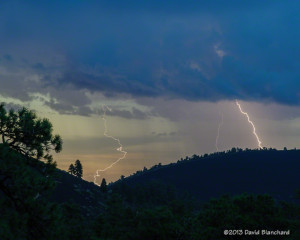July has turned out to be a good month for photographing weather across northern Arizona. For a few days in the middle of the month I was able to capture images of lightning, rainbows, and colorful clouds at sunset near Sedona and the Grand Canyon.
The conditions on 13 July 2015 were about perfect for late afternoon photography. Deep moisture was present across the eastern half of Arizona while very dry air persisted across the west. This allowed storms to form over the eastern half of the state while clear skies allowed the setting sun to shine brightly on the landscape near Sedona.

Cathedral Rock was nicely illuminated by the setting sun and shafts of rain caught the sunset colors. A faint rainbow was also present adding an additional dimension to the scene.

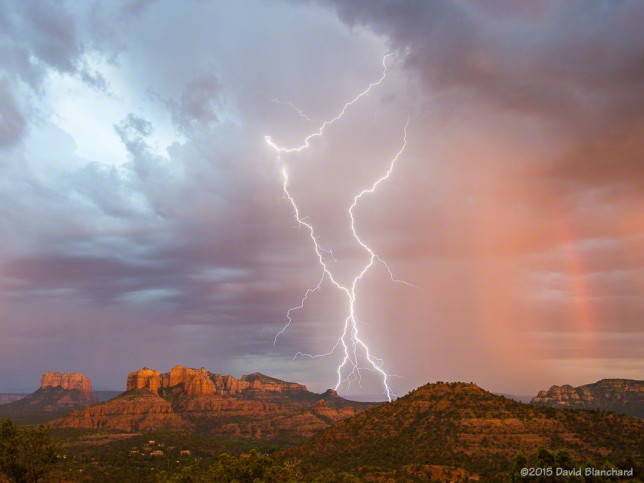
After the sun set, I repositioned so that I could catch twilight colors in the western sky and lightning from additional storms. In the background can be seen the highly textured shape of the Cockscomb.

The next day proved to be difficult for lightning photographs but the sunset colors on the clouds over Cathedral Rock were very dramatic.
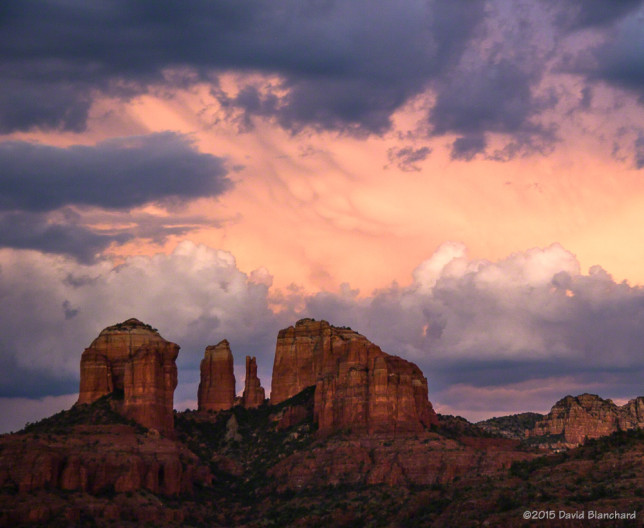
Sensing a need for a different location, I travelled to the South Rim of the Grand Canyon a few days later (16 July) hoping to get some lightning photos over the canyon. The atmosphere had stabilized some and storms were much weaker and very little lightning was observed.
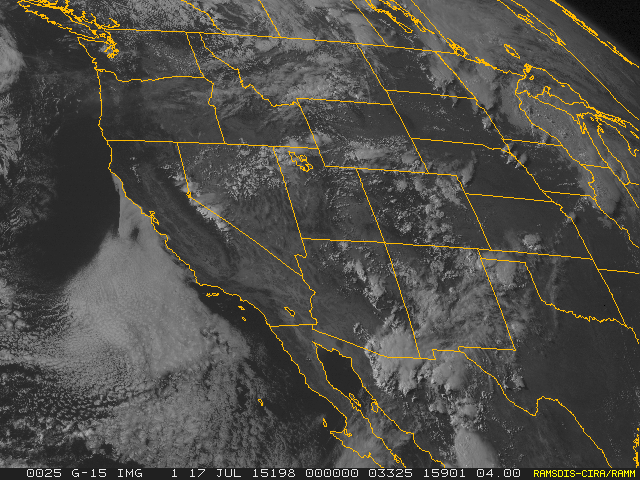
Consolation prize was a partial rainbow over the Canyon.

A very nice consolation photo, indeed!


